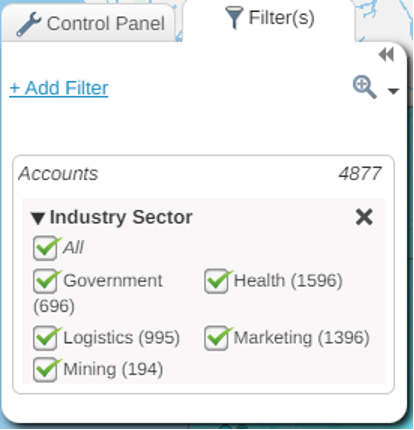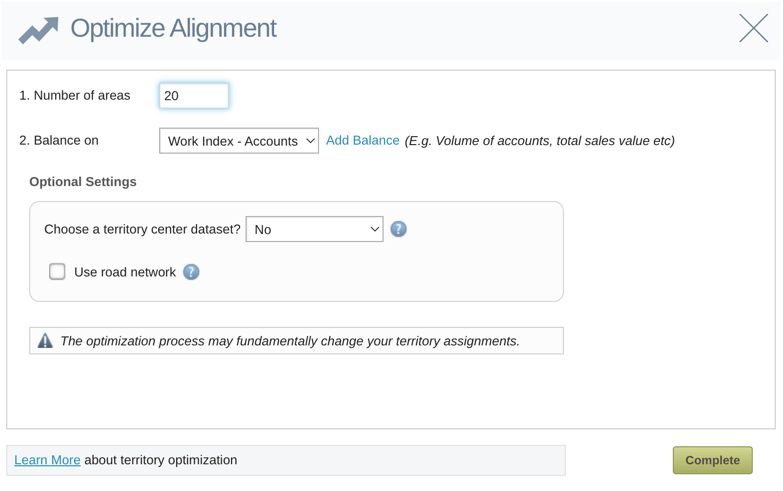Quick answer
Dividing sales territories is a strategic lever that creates a direct path to competitive advantage. It focuses your team on the right targets, optimizes travel time, and boosts overall performance by ensuring every rep has a fair shot at quota.
The 8-step Formula
- Analyze metrics: Review past data to spot trends and gaps
- Define objectives: Set clear revenue and volume goals
- Score customers: Segment accounts to prioritize high-value targets
- Draw boundaries: Design territories based on potential, not just geography
- Assign talent: Match reps strategically to the regions where they will win
- Communicate clearly: Document the map and share the vision
- Build plans: Create specific action steps for each territory
- Track results: Monitor performance and adjust boundaries as markets shift
What Are Sales Territories
and Why Do They Matter?
Sales territories are specific geographical areas or customer segments strategically assigned to your reps. They are designed to maximize sales efficacy by ensuring the optimal use of resources. Getting it right is essential when you understand how to divide territories for sales, the outcome is:
- Strong customer relationships
- Improved customer satisfaction
- Increased sales
- Optimal productivity
- A healthier sales environment
Methods to Divide Sales Territories

Effective territory management isn't just about maps—it's about balancing workload with market coverage.
The right framework maximizes revenue and keeps sales reps efficient. There is no "one-size-fits-all" approach.
Method 1
Geographic Division
Dividing by geography is often the most intuitive way to slice a map. It creates clear lanes, reduces travel costs, and fosters local expertise.
The Upside
- Efficiency: Streamlined travel means more time selling
- Clarity: Definite ownership prevents turf wars
- Depth: Reps build stronger relationships within a specific region
Method 2
Demographic or Population-based Division
Dividing sales territories based on population ensures reps target the right profiles, not just the nearest ones. Knowing how to divide sales territories by demographic segments helps match reps with markets where they can be most effective.
The Advantage
- Precision: Target areas with high concentrations of ideal customers
- Efficiency: Support smarter resource allocation
- Results: Drive higher close rates and better ROI
Method 3
The Industry Vertical
When deciding how to divide up your sales territory, segmenting by niche allows teams to target specialized markets with precision. Vertical focus turns reps into true experts on customer pain points and competitive dynamics.
The Payoff
- Depth: In-depth focus elevates market penetration
- Growth: Specialized attention boosts your bottom line
Method 4
Customer Size Division
Dividing by company size ensures reps focus on accounts that match their experience level and quota capacity. The strategy: This approach defines clear boundaries for how to divide territories for sales.
Why it Matters
- Focus: Senior reps handle complex, high-value accounts
- Balance: Workload is distributed evenly across large and small targets
Method 5
The Product Division
If your business offers multiple distinct lines, the answer to how to divide sales territories might lie in your catalog, not on a map. Aligning reps with specific products turns them into specialists, boosting win rates and upsell potential.
The Efficiency Gain
- Focus: Simplifies training by narrowing the scope
- Clarity: Makes performance benchmarking easier across focused territories
Method 6
The A-z Method
Choosing how to divide up your sales territory by the alphabet might seem basic, but it simplifies assignments instantly. This method cuts confusion and streamlines management, particularly for smaller or global teams.
The Upside
- Clarity: Zero ambiguity over ownership
- Speed: Makes onboarding and account assignment effortless
- Coverage: Ensures teams follow up without complex mapping
Method 7
The Revenue Potential Play
A high-performance way to divide sales territory is by market or revenue potential, rather than just lines on a map. Allocating reps based on forecasted demand ensures your highest-value zones get the coverage they deserve.
The Growth Engine
- Balance: Distributes territories based on opportunity, not geography
- Focus: Guarantees high-value zones get sufficient support
- Results: Drives superior growth and revenue outcomes
Step-by-step Process To
Divide Sales Territories
Start by collating and analyzing your market and sales data using mapping software for business. This is critical to how to divide sales territories well. Consider customer data, population, industry data, and competitor locations, and assess your sales potential by customer type and segment.
Step 1
Define the Mission
Before drawing lines, analyze your market data using mapping software. This foundation is critical to an effective territory management plan
You can't prioritize everything. An effective plan starts by honing in on a specific business goal.
Group your objectives into three buckets
- Growth: Revenue, new account prospecting, and product profitability
- Efficiency: Workload balance, utilization, and cost reductions
- Service: Relationship continuity and balanced quotas
Select one primary objective to guide your territory division process.
Step 2
Segment and Score
Group your targets and prospects into logical buckets based on the division methods outlined above. Quality segmentation supports smarter sales prospecting and ensures efficient resource allocation.
Stop guessing and start matching the right accounts to the right reps instantly.

Step 3
Design Territory Maps
Define clear boundaries when you build sales territories to ensure total accountability and accurate reporting.
Sales reps spend just 35% of their time actually selling.
The Strategy
- Maximize: Selling time by shrinking travel distance
- Balance: Aim for equal opportunity across all zones
- Clarify: Eliminate overlap so teams focus their efforts effectively
Step 4
Assign Reps Strategically
Resource management often dictates success. With limited budgets, you must focus on rightsizing your sales resources to ensure every zone is covered.
You don't need spreadsheets for this. You can achieve perfect balance in minutes using a territory optimizer.

Step 5
Validate and Launch
Involve your sales managers and reps in the final stages of the division process. Do not finalize the map in a vacuum. Local knowledge acts as a reality check against the data, preventing expensive disruption.
The goal: Use field feedback to smooth transitionary periods and ensure total buy-in from the start.
Step 6
Build the Action Plan
Supply your reps with tailored plans, account lists, and route maps aligned to their new territories.
Clarity empowers reps to execute effectively and focus on results, not logistics.
The Execution
- Align: Ensure KPIs match the specific territory goals
- Empower: Provide the resources needed to track progress
- Optimize: Support the strategy with GIS tools for business
Step 7
Monitor and Optimize
Once you divide sales territories, the work isn't done. You must actively track performance to meet your revenue expectations.
Markets shift. If your map is set in stone, you will miss targets.
The Playbook
- Cadence: Review performance quarterly (at a minimum)
- Flexibility: Build in the agility to update alignments on the fly
- Optimization: Continuously tweak boundaries to match current reality, not last year's plan
Best Practices for Sales Territory Planning
Follow our tried-and-true methods of how to divide sales territories, but make sure to benchmark them against best practices. Each best practice below supports not just how to divide sales territory, but also how to maintain and improve territories over time. Strong planning saves time, boosts morale, and drives sustained growth.
Step 1
Balance Workload and Sales Potential
A practical approach to dividing sales territories balances workload and revenue opportunity across all reps. This is essential because balancing workload prevents burnout, reduces performance gaps, and creates a fair system that drives motivation. If you overlook this vital aspect, you risk underutilizing strong reps or overwhelming others.
Step 2
Use Data-driven Territory Design
Data-driven decisions are objective, scalable, backed by insight, and fundamental to progress. Data should be at the heart of how to divide up your sales territory, from customer value to market density. Mapping tools allow you to visualize where reps are needed most and how to design territories that make the most impact.
Step 3
Involve Sales Teams and Managers
Sales teams perform exponentially better when motivated and clear on the value of the objectives before them. Involving your sales teams and managers in your territory management plan will boost morale and create a sense of ownership. It also ensures that sales territories are created in collaboration with teams that intimately understand the sales process.
Step 4
Leverage Territory Mapping Tools
You need territory mapping software to maximize your time and achieve the best data-backed territory designs. Look for a solution offering robust mapping and visualization with territory and route optimization. The power trio from eSpatial is the best available and easiest to use — see eSpatial pricing options to get started.
Step 5
Track Key Sales KPIs
Once you implement your plan for how to divide territories for sales, monitor key metrics such as territory coverage, sales, and quota attainment. These KPIs help you measure rep performance and identify areas needing improvement. Tracking results ensures your initial efforts to divide sales territory yield sustainable returns.
Step 6
Reevaluate and Adjust Regularly
Territories aren't static; customer needs, business goals, and team structures shift over time. Review your approach to how to divide sales territories quarterly or biannually to ensure ongoing relevance and efficacy. The ability to pivot and adjust means you’re going one step further than dividing territories—you’re managing for long-term success.
Conclusion and Key Takeaways
Remember one important thing when learning how to divide sales territories: Your business, market, and customer relationships are unique. However, with a clearly defined process, you will reap the rewards of higher sales productivity, effectiveness, and revenue. For the next steps in territory success, see our expert tips on how to grow a territory.
Frequently Asked Questions
What is the Best Way to Divide Sales Territories?
There is no silver bullet. The right method depends entirely on your primary business goal:
- To cut costs: Use geographic division
- To boost revenue: Use market potential
- To deepen expertise: Use industry segmentation
How Often Should I Review My Territory Plan?
Quarterly. Annual reviews are too slow for modern markets. You need to monitor performance continuously and build in the flexibility to adjust alignments as staff or strategies change.
Why Do I Need a Territory Optimizer?
Speed and fairness. Manual spreadsheets are prone to bias and human error. An optimizer uses data to balance workload and opportunity in minutes, ensuring every rep has a fair shot at hitting quota.
How Does Territory Design Impact Sales Rep Retention?
It defines their paycheck. Imbalanced territories lead to burnout for over-worked reps and starvation for under-allocated ones. A balanced map ensures equal earning potential, which keeps top talent happy.
Can I Combine Different Division Methods?
Yes. Most high-performing organizations use a hybrid approach. For example, you might divide the country geographically first, then segment major metros by account size or industry vertical.


